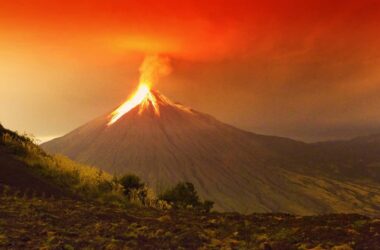Scientists have concluded that the natural processes involving reactions between rocks, rain, and carbon dioxide in the atmosphere cannot prevent the severe warming caused by our carbon emissions. However, understanding these processes could help us develop more effective methods to capture and slow down climate change.
Throughout the Earth’s history, the climate has remained relatively stable despite the increase in carbon dioxide from volcanic emissions. This stability is attributed to the weathering process, where carbon dioxide reacts with rainwater to form carbonic acid. This acid dissolves rocks like limestone, leading to the production of soluble minerals and dissolved carbon. These products are then washed into the oceans, where they form carbonate minerals that store carbon in rock form.
Previous studies have suggested that higher temperatures can accelerate chemical weathering, resulting in more carbon dioxide being removed from the atmosphere. This process acts as a natural thermostat for the climate. However, researchers wanted to determine if this holds true in all conditions.
The team analyzed lab studies and field experiments that measured weathering rates in different soils around the world. They found that chemical weathering is particularly sensitive to temperature in areas with high rainfall and high rates of rock erosion. However, this natural weathering process is too slow to counteract the significant amount of carbon dioxide released by human activities.
Despite this, some scientists propose a technique called enhanced rock weathering, where rocks are mined, ground, and spread over agricultural fields to promote additional weathering. This approach, though requiring substantial mining and a large-scale implementation, could potentially help slow down climate change.
Understanding the temperature sensitivity of weathering is crucial for understanding past climates and predicting future climate scenarios. This study provides important insights into the concept of weathering and its implications for carbon storage.
Overall, this research contributes to our knowledge on climate change and offers a potential approach to address its challenges.
Unique Insights:
- The stability of the Earth’s climate throughout history can be attributed to the weathering process, where carbon dioxide reacts with rainwater to dissolve rocks and store carbon in minerals.
- Chemical weathering is particularly temperature-sensitive in areas with high rainfall and high rates of rock erosion, but this process is not sufficient to counterbalance human-induced carbon dioxide emissions.
- The concept of enhanced rock weathering, involving mining and spreading rocks on agricultural fields, could be a potential method to slow down climate change.
- Understanding the temperature sensitivity of weathering is essential for comprehending past climates and predicting future climate scenarios.








